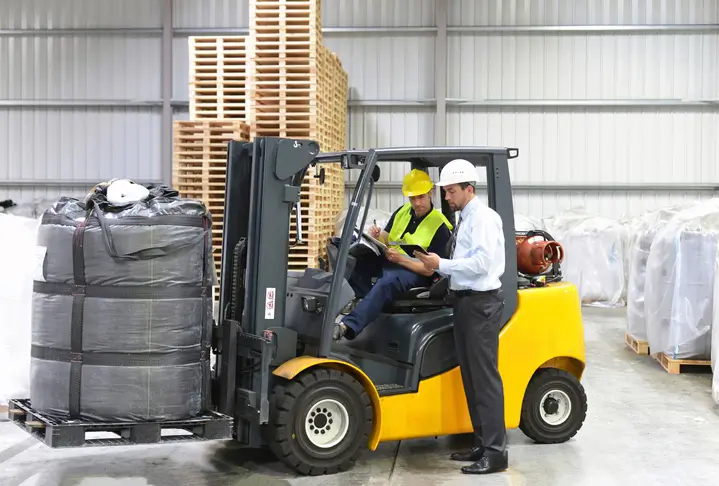Best Practices in HAZMAT Safety: A Comprehensive Guide
Handling hazardous materials (HAZMAT) is a critical aspect of various industries, from manufacturing to healthcare. These materials’ transportation, storage, and disposal require stringent safety protocols to prevent accidents and ensure public safety. The importance of HAZMAT safety, best practices, and the regulatory framework governing hazardous materials are described in this article. The importance of hazmat transportation training and hazmat transportation certification is also described here.
Importance of HAZMAT Safety
HAZMAT safety is crucial due to the potential risks associated with the mishandling of hazardous materials. These risks include chemical spills, explosions, and exposure to toxic substances, which can lead to severe injuries, environmental damage, and loss of life.
Regulatory Framework
The regulatory framework for HAZMAT is comprehensive, involving several agencies and regulations to ensure the safe handling and transportation of hazardous materials. The Pipeline and Hazardous Materials Safety Administration (PHMSA) plays a key role in developing and enforcing regulations.
DOT HAZMAT Regulations
Title 49 in the CFR part Parts 100-185 describes the Department of Transportation (DOT) HAZMAT Regulations in detail. These regulations comprehensively govern the transportation of hazardous materials, addressing critical aspects such as classification, packaging, hazard communication, and emergency response. Proper classification of hazardous materials is vital for determining appropriate packaging, labeling, and handling procedures, ensuring that the materials are managed safely and in compliance with regulatory standards.
Packaging requirements mandate that HAZMAT packaging meets specific standards to prevent leaks and spills during transportation, thereby minimizing risks to handlers and the environment. Hazard communication involves the use of proper labeling and documentation to inform handlers and emergency responders of the associated risks, facilitating safe handling and swift response in case of incidents.
Emergency response regulations require the development and implementation of emergency response plans to address potential HAZMAT incidents effectively. Additionally, the DOT provides extensive guidance on hazmat transportation certification and compliance, ensuring that all involved parties are properly trained and equipped to handle hazardous materials safely and in accordance with regulatory requirements.
HAZMAT Compliance
Compliance with HAZMAT regulations is mandatory for all entities involved in the handling, transportation, and disposal of hazardous materials. In case of non-compliance with such regulations, there is a chance of fines and legal actions being imposed. Companies must ensure that their operations align with the regulatory requirements to maintain safety and avoid potential liabilities.
HAZMAT Training and Certification
Proper training and certification are essential components of HAZMAT safety, ensuring that personnel are adequately prepared to handle hazardous materials safely. The Department of Transportation hazmat training requirements are detailed in 49 CFR §172.700-704, encompassing a comprehensive approach to HAZMAT education. These requirements include various types of training: general awareness, function-specific training, safety training, security awareness training, and in-depth security training.
General Awareness: This training provides an overview of HAZMAT regulations and the hazards associated with hazardous materials, helping employees understand the fundamental principles of HAZMAT safety and compliance.
Function-Specific Training: Tailored to the specific duties of employees, this training ensures that individuals handling hazardous materials are well-versed in the procedures and practices relevant to their roles.
Safety Training: This crucial component covers safe handling practices and emergency response procedures, equipping employees with the knowledge to prevent accidents and respond effectively to emergencies.
Security Awareness Training: Focused on recognizing and responding to security threats involving hazardous materials, this training enhances the preparedness of personnel to deal with potential security risks.
In-Depth Security Training: This training is required for employees involved in the transportation of high-risk hazardous materials. It provides the advanced knowledge and skills necessary to handle such materials securely.
Hazmat transportation training and certification are vital for ensuring that all personnel are knowledgeable and capable of safely handling hazardous materials. Certification programs, such as IACET CEU HAZMAT Training, provide recognized credentials that validate an individual’s competency in HAZMAT safety practices. These certifications not only enhance the safety and efficiency of HAZMAT operations but also ensure compliance with regulatory standards, thereby minimizing risks and promoting a culture of safety within organizations handling hazardous materials.
HAZMAT Safety Programs
Implementing comprehensive HAZMAT safety programs is vital for organizations involved in the handling of hazardous materials. These programs should encompass several key components to ensure safety and compliance. Risk assessment is the first step, involving the identification and evaluation of potential hazards associated with hazardous materials. Developing clear and detailed standard operating procedures (SOPs) for handling, transporting, and disposing of hazardous materials is crucial for maintaining consistency and safety.
Providing ongoing training and education to employees is essential to keep them updated on the latest safety practices and regulatory changes. Emergency preparedness is another critical component, requiring the establishment and maintenance of emergency response plans to address potential HAZMAT incidents effectively. Finally, monitoring and evaluation of the safety program should be conducted regularly to assess its effectiveness and make necessary improvements. These components collectively ensure that organizations can manage hazardous materials safely and in compliance with regulatory standards.
Accident Statistics
Understanding the frequency and causes of HAZMAT incidents is crucial for improving safety practices. According to the HAZMAT Incident Statistics provided by the PHMSA, a significant number of HAZMAT incidents are reported annually, with varying degrees of severity. Thousands of incidents occur each year (maximum in 2021 and 2022, i.e., 23, 122, and 23 407 accidents, respectively), ranging from minor spills to major accidents involving fatalities and significant property damage.
Common causes of HAZMAT incidents include human error, equipment failure, and improper packaging. The consequences of these incidents can be severe, encompassing injuries, fatalities, environmental contamination, and substantial economic losses. By analyzing these statistics, organizations can identify trends and implement targeted measures to reduce the risk of HAZMAT incidents. This proactive approach allows companies to address the root causes of incidents and enhance their hazardous materials safety protocols, ultimately leading to a safer working environment and better compliance with HAZMAT regulations.
HAZMAT Packaging Innovations
Innovations in HAZMAT packaging play a crucial role in enhancing the safety of the transportation of hazardous materials. Advanced packaging solutions are designed to withstand the rigors of transportation and prevent leaks, spills, and other accidents.
Key Innovations
Smart packaging innovations in HAZMAT transportation incorporate sensors and monitoring devices to track the condition of hazardous materials during transit. This real-time tracking ensures immediate detection of any issues, enhancing overall safety. Sustainable packaging utilizes eco-friendly materials and designs to minimize environmental impact, aligning with green initiatives and regulatory standards. Additionally, enhanced durability involves developing packaging that can withstand extreme conditions, such as high temperatures and pressure, preventing leaks and spills. These innovations collectively contribute to the overall safety and efficiency of HAZMAT transportation, reducing the likelihood of incidents and improving compliance with regulatory standards.
By integrating smart, sustainable, and durable packaging solutions, organizations can better protect both the environment and human health, ensuring that hazardous materials are transported securely and responsibly. This approach not only mitigates risks but also supports sustainable practices and regulatory adherence in the HAZMAT industry.
HAZMAT Tracking Systems
Effective HAZMAT tracking systems are essential for monitoring the movement of hazardous materials and ensuring their safe transportation. These systems provide real-time information on the location and condition of HAZMAT shipments, enabling prompt response to potential issues.
Benefits of HAZMAT Tracking Systems
Enhanced visibility in HAZMAT tracking systems provides detailed information on the status of shipments, improving oversight and control. This leads to improved safety by enabling timely detection and response to potential hazards, reducing accident risks. Additionally, it ensures regulatory compliance, minimizing the risk of non-compliance penalties.
Hazardous Materials Risk Management
Hazardous materials risk management is a critical aspect of HAZMAT safety. It involves identifying, assessing, and mitigating risks associated with the handling and transportation of hazardous materials.
Key Elements of Risk Management
Effective risk management practices are crucial for protecting workers, the public, and the environment from the dangers associated with hazardous materials. This involves conducting thorough risk assessments to identify potential hazards and evaluate their impact, implementing risk mitigation measures to reduce the likelihood and severity of incidents, and developing comprehensive emergency response planning to address potential HAZMAT emergencies.
FBest Practices in HAZMAT Transportation
Adopting HAZMAT industry best practices is crucial for ensuring the safe and efficient transportation of hazardous materials. These best practices include ensuring proper training and certification for all personnel involved in HAZMAT transportation to maintain a high level of competency and safety. Adherence to regulatory standards is essential, requiring strict compliance with all applicable regulations and guidelines. Conducting regular inspections and maintenance of equipment and packaging is necessary to prevent failures and ensure reliability.
Maintaining effective communication among all parties involved in HAZMAT transportation helps coordinate efforts and address issues promptly. Additionally, emergency preparedness involves developing and practicing response plans to address potential HAZMAT incidents efficiently. By following these best practices, organizations can significantly reduce the risk of HAZMAT incidents and ensure the safe transportation of hazardous materials.
Conclusion
Ensuring the safety of hazardous materials transportation is a complex but essential task. By adhering to regulatory requirements, investing in comprehensive training programs, and implementing best practices, organizations can minimize the risks associated with HAZMAT and protect both people and the environment.
The importance of hazardous materials safety cannot be overstated. With the increasing volume of hazardous materials being transported, the need for robust safety measures and regulatory compliance is more critical than ever. Through continuous improvement and adherence to industry standards, we can achieve a safer future for HAZMAT transportation.








